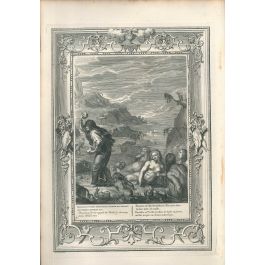ANTONIO RAIMO GALLERY
Picart, Mythology, Temple of Muses, Deucalion
Picart, Mythology, Temple of Muses, Deucalion
Couldn't load pickup availability
It seems like you're interested in exploring the connection between Bernard de Montfaucon (often associated with Picart), mythology, the Temple of the Muses, and the figure of Deucalion. Let's break down these elements and see how they might interconnect:
1. **Picart (Bernard de Montfaucon)**:
Bernard de Montfaucon, known for his extensive work on ancient art and artifacts, contributed significantly to the study of classical antiquity. His work often included detailed depictions of temples, sculptures, and inscriptions, which would be valuable for understanding the artistic and religious contexts of ancient Greece and Rome.
2. **Mythology**:
Greek mythology includes a rich array of stories involving gods, heroes, and legendary figures. These myths often reflect the values, beliefs, and cultural practices of ancient Greece.
3. **Temple of the Muses**:
The Muses, in Greek mythology, are goddesses who inspire the arts and sciences. Temples dedicated to the Muses were places of learning and artistic endeavor. While there is no single "Temple of the Muses," various locations in ancient Greece were sacred to them, including places like the Mouseion in Alexandria.
4. **Deucalion**:
Deucalion is a figure in Greek mythology, known for being the son of Prometheus and for surviving a great flood sent by Zeus to punish humanity. Deucalion, along with his wife Pyrrha, repopulated the earth by throwing stones over their shoulders, which turned into people. His story parallels the biblical flood narrative and reflects themes of renewal and rebirth.
**Connecting the Elements**:
- **Picart’s Work and Mythology**: Picart’s work often focused on the material culture of ancient Greece and Rome, including temples and religious practices. While he might not have directly illustrated Deucalion’s myth, his detailed studies would provide insights into the religious and artistic contexts in which such myths were depicted.
- **Temple of the Muses and Deucalion**: The Temple of the Muses represents the celebration of arts and knowledge in Greek culture. Though Deucalion is not directly associated with the Muses, the stories about him would have been part of the broader mythological tradition celebrated and studied in places dedicated to the Muses. Temples dedicated to the Muses would have been sites where myths like that of Deucalion were recounted, discussed, and depicted in art.
In summary, while Bernard de Montfaucon (Picart) may not have specifically focused on Deucalion, his work provides a valuable context for understanding the artistic and religious environment of ancient Greece, where myths like Deucalion’s would have been an integral part of the cultural landscape celebrated in temples and artistic representations.

-
Shipping
Share the details of your shipping policy.
-
Returns
Share the details of your return policy.
Image with text
Pair text with an image
Pair text with an image to focus on your chosen product, collection, or artist. Add details on availability, style, or even provide a review.
Image with text
Pair text with an image to provide extra information about your brand or collections.

